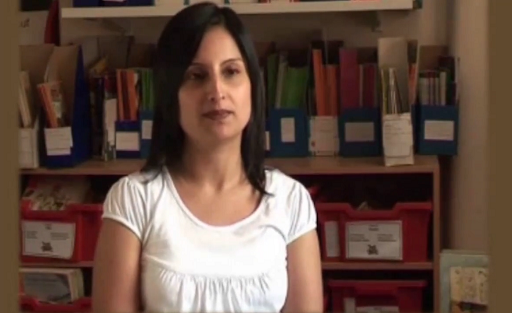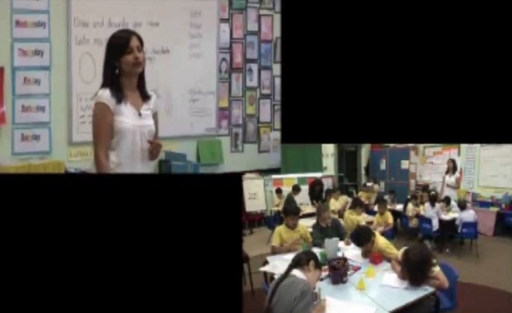4 Observing teaching and learning
In this activity you’ll observe a whole class.
Activity 4 Observing a whole class
The video sequence of a lesson you are about to watch is approximately 10 minutes, but the entire lesson is around 40 minutes.
The teacher has planned a lesson for Year 2 children (ages 6–7) on 2 dimensional and 3 dimensional shapes.
First, listen to the teacher talk about the class, her plans for the lesson, and what she wants to observe in the lesson.

Transcript: Video 4
Now observe part of the lesson. As you observe, or afterwards, jot down your answers to these questions:
How are the children organised?
What does the teacher do?
Are all the children doing the same thing?
What dispositions for learning can you see in the children?
Did you mainly observe the teacher – was it difficult to observe the children?

Now listen to the teacher’s evaluation of the lesson:

Transcript: Video 6
Discussion
Observing a whole class can be a challenge. There is so much going on, with different groups doing different activities.
The teacher has organised the whole class into ability groups and given each group a different activity. Children are grouped by ability, and it seems that the more able groups are named for more complex shapes: pentagons and hexagons. A teaching assistant is working with one group but we do not see her. There are differentiated tasks: some groups are writing, and other groups are constructing, sorting and matching.
The teacher’s goal is to observe children using the correct vocabulary to describe 2d and 3d shapes. She also says that she wants to see the children working independently. The teacher moves around the classroom throughout the lesson, checking on each group’s progress and giving extra work to those who finish quickly. The teacher is very much in charge of the lesson, but she also talks to the children in a kind and warm way. She never raises her voice.
The children show persistence, independence and confidence in the tasks that the teacher has set. They follow her instructions and move as and when she directs them.
The video sequence shows the teacher teaching, but how much can you tell from the video about children’s learning? The teacher does almost all of the talking, and directs all of the activities. The teacher is observing how much children use specific vocabulary, but she admits herself at the end of the lesson that many children found their activity too easy.
Although the children are not all doing the same activity – some are writing, others are making shapes – we do not gain insights into how they feel about their tasks. The children are allowed to talk quietly to each other as they work, and it would be interesting to know whether they are talking about shapes or about something else.
Imagine you could sit at a table with one group of children in this lesson and ‘eavesdrop’ on their talk as they do what the teacher is asking them to do. You would get a fuller picture of their learning and their understanding. Remember the Session 1 transcripts of Mia and Sarah, and the Portuguese children, and what you found out about them as they worked on tasks set by their teachers.
In the maths lesson on 2d and 3d shapes, you can get an occasional glimpse of what children know and understand. For instance, when a child says to the teacher that a right angle is ‘like an L-shape’, it shows the child can make visual comparisons and can see similarities and patterns, and knows alphabet letters. When another child names his shape ‘Michael’ for Michael Jackson, he shows humour, imagination and creativity, as well as his knowledge of popular music and culture.
